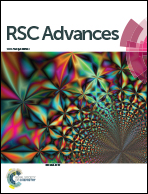Comparative assessment of performance, emissions and combustion characteristics of gasoline/diesel and gasoline/biodiesel in a dual-fuel engine
Abstract
In recent years, rapid growth in population, development, and industrialization have led to a high demand for energy worldwide. Biofuels from bio-based products can be considered an alternative to fossil fuels used in the transport sector. However, the use of biodiesel in conventional diesel combustion engines has usually caused lower thermal efficiency and higher specific fuel consumption. Using alternative fuels and switching to promising combustion technologies such as low temperature combustion (LTC) are reliable approaches to address this issue. This research aims to use biofuels as an alternative energy source for engines operating in dual-fuel combustion mode. The effects of diesel/biodiesel strategies on dual-fuel combustion were investigated. This dual-fuel combustion mode proposes port fuel injection of gasoline and direct injection of diesel/biodiesel fuel with rapid in-cylinder fuel blending. The results of engine performance, emissions, and cylinder pressure were recorded and analyzed. The results showed that engines operating under dual-fuel combustion mode could achieve high efficiency with near zero nitrogen oxide (NOx) and smoke emissions. The biodiesel–gasoline dual-fuel combustion mode showed lower hydrocarbon (HC) and carbon monoxide (CO) emissions than the diesel–gasoline dual-fuel combustion mode. The oxygen content in biodiesel is especially useful in limiting locally fuel rich regions, resulting in improved combustion and thereby reducing HC and CO emissions simultaneously.


 Please wait while we load your content...
Please wait while we load your content...